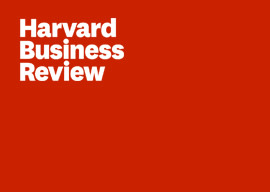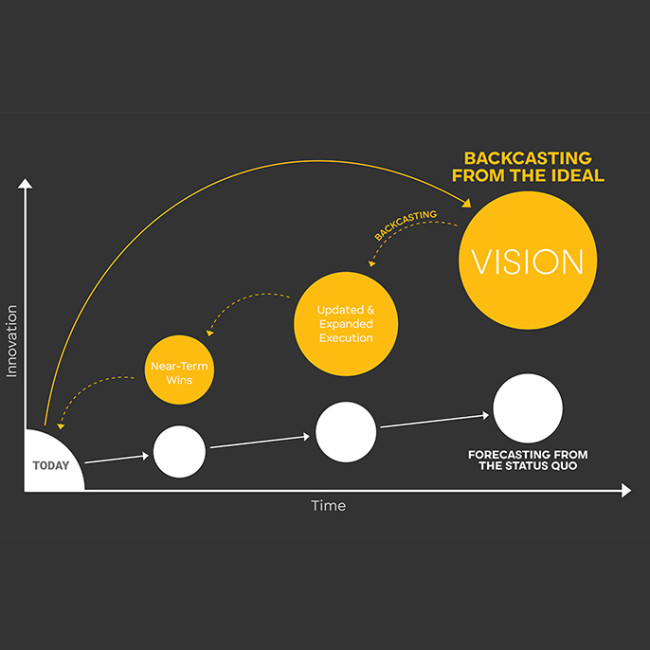
Business model innovation. It has the potential to reshape industries and drive tremendous growth—but it’s notoriously difficult to achieve. We believe that for large companies, creating innovative business models is not only possible, it can be systematized and repeated.
How?
By changing the way customers experience a product or service, you can find new opportunities to evolve your business and even create entirely new markets. And in turn, generate substantial, enduring financial growth.
Traditionally, innovation is about the what—finding new offerings that customers want to buy. It focuses on a product or service, like Nike’s Flyknit shoes or Bertucci’s new restaurant concept, for example. But business model innovation is about the how, not the what. And the best business model innovations brew up a how that truly enhances people’s perception of the what.
Want to find the new how that can fuel your organization’s expansion and potentially redefine your industry? If so, business model innovation is likely to be a core part of your success.
Where do you start?
Define Your Mission
First, you must define your mission—what is the broader level value your company offers to the world? Then you must understand enduring customer goals—their needs, wants, desires—as they relate to your mission. From there, by taking a step back and focusing on meta-technology and cultural trends, you can start to identify how the changing environment of customers' worlds is opening up new opportunities to serve them. People’s core goals do not expire, but the world around them evolves. Changing technologies, attitudes, and social structures can allow people to achieve their goals in different ways, oftentimes enabled through different business models.
For example, people have always wanted to connect with faraway family and friends. 150 years ago, we used letters and telegrams. Now, we hop on a Skype call from our laptops. The goal is the same, but new technologies allowed people to achieve it more effectively, optimizing the experience by eliminating many of the negative components and enhancing the positive ones. The transition to this new offering was, in part, enabled by a new business model. Skype offers a baseline, free service that has accelerated adoption.
To understand customer goals, you must look—closely—at what people are really buying. Chances are, there are components of their current purchase or elements of the current experience that don’t contribute at all to the portion of it they actually value. Or there may be opportunities to open up access to new ways of delivering what they are really buying. Once you grasp this, you can find a new and better way to give customers what they really want.
For example, Netflix launched its subscription service in 1999, and it proved to be one of the most innovative business models in the modern media industry. People have always sought entertainment, and movies have long been a major human passion. While people for many years rented movies, they didn’t really want to rent movies—they wanted to be able to conveniently and comfortable enjoy a broader array of entertainment at home. This is what people were really buying, and recognizing it was the key to Netflix’s success. Aided by the rise of DVDs as a delivery mechanism, its recommendation engine, and favorable revenue sharing agreements, Netflix built an innovative business model on top of these technology advances and around the core goal of their customers. Netflix gave people what they really wanted: access to the world’s largest collection of home entertainment from the comfort of home. They didn’t change what they delivered as much as the subscription model changed how they delivered it. And subscription is the innovative business model that continues to drive Netflix’s growth and industry change today.
Change Your How
It’s easy to feel overwhelmed by the prospect of business model innovation, especially if you don’t do it regularly. Many of the most noticeable examples come from startups with millions in venture funding and no legacy business to hold them back. Sometimes, large established companies create new business models, but success can feel haphazard and one wonders if there’s any systemic way to fuel growth through business model innovation.
In fact, there is. We’ve identified three key components that enable organizations to consistently identify new opportunities to service customers.
1. Build Teams That Can Uncover and Apply Insights About Your Customers
To increase your chances of success, build Business Creation Teams that include a mix of creative business strategists, technologists, experience designers, ethnographers, and hackers. Challenge them to apply their diverse perspectives to develop core insights about customers’ enduring goals and use these to seed new thinking. It’s critical that everyone on the team can speak with the voice of the customer and work from an internalized understanding of what customers want. (Do not start with the goal of business model innovation…that will come later.)
2. Give Them Permission to Operate Outside the Current Business Model
Business Creation Teams need to operate detached from daily operations and they need to be given permission to suspend your company’s current reality. Innovative business models often die an early death because it’s hard to find fertile ground to plant a new idea into an existing business structure. This is perfectly logical–your existing structure serves your current business, but thinking informed by that perspective may make innovative new business models seem like crazy ideas. Allow your team to work outside the current structure and visualize those crazy ideas. Don’t weigh them down with quarterly revenue demands or existing infrastructure.
3. Give Them the Resources to Try
After your team has formulated some (possibly crazy) business ideas, play them out. Start them off with a small budget and a few highly qualified team members to explore where the ideas could lead. If the new model could disrupt your current business, try it in a contained environment with a small subset of customers to see how they react. Give the team opportunities and space to explore the new models and iterate on them–they may not get things right the first time, but if the customer understanding is sound, they’ll eventually arrive at an innovative model that will drive your business into the future.






